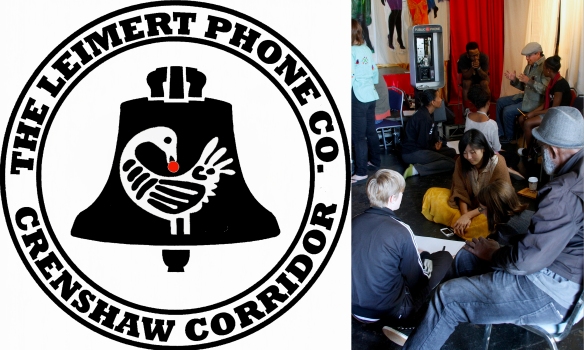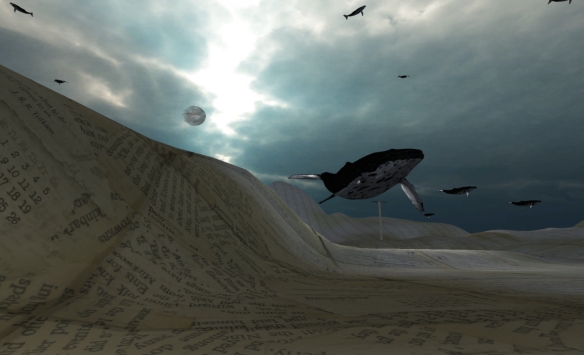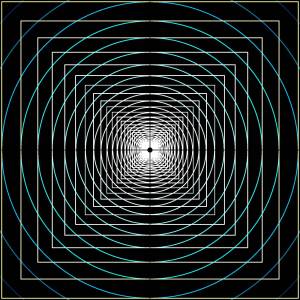HoloKeys
7/9/16
Holokey is a Mixed Reality musical training tool. It was developed in 48hrs as part of Microsoft’s HoloLens hackathon in Los Angeles from 6/24 – 6/26/16.
Developed by: Tri Nguyen (Midnight Project), Karl Baumann (MA+P USC), Biayna Bogosian (MA+P USC), James Craft (Composer), Xárene Eskandar (MAT UCSB), Todd Furmanski (MA+P USC)
15 Seconds
5/15/16
15 Seconds is a surreal, black comedy. An astronaut is jettisoned out of his space station without proper gear. Will he find peace in his last 15 Seconds above Earth?
The short film was completed as part of Mike Fink’s USC “Directing in Virtual Worlds” class. The concept is a response to the prompt “have an actor hit by a car, truck, or other moving object.”
Written/Directed by Karl Baumann — Starring Dan Louis — Music by James Craft
Priscilla
1/5/15
(Password: 506)
Priscilla is a surreal, suspense story. A small stain leads a housewife to madness. The character feels a deep isolation and alienation from living as a suburban housewife. She realizes how insignificant her life has become in relation to the larger world. It was produced with production MFA students Candy Li, Veronica Li, and Tulica Singh.
My short fiction films have been a great way to construct semi-fictional worlds that are scaled down to the individual experience. The films I’ve made at USC have a tinge of magical realism and focus on alienation tied to sub/urban experiences. Additionally, it’s given me deeper insight into working with actors and large production crews and equipment.
“Sankofa Says” Big Urban Game at Indiecade
12/4/14
“Sankofa Says” is a place-based game that brings people together on the streets of Culver City as part of Indiecade 2014. To succeed, players join flash rallies at local landmarks, make phone calls to answer riddles about local history, and tell truth from neighborhood fiction.
Every adventure requires hitting the streets, meeting new people. Even locals will encounter a few surprises. With a little luck, you will discover strange cinema history, play with public art, and even help tell the story of Culver City yourself.
More on the game: http://www.sankofa.cc
More on our group: http://www.leimertphonecompany.net/
“Cat Call” Short Fiction Film
4/30/14
(Password: catcall)
Offbeat, indie comedic drama. The film focuses a man going through a breakup after recently moving to LA. While soul searching through the streets, he decides to respond to a “missing cat” sign in the hope of making a connection.
Shot as part of USC’s intermediate production course. Screening May 10th at Norris Theater. Currently in submission for Film Festivals.
IML 404: Tactical Media’s Leimert Park “Pop Up Plaza”
3/30/14
On March 30, 2014 the Leimert Phone Company and our USC IML 404: Tactical Media Class showcased their current projects as part of a “Pop-Up Plaza” at the Leimert Art Walk. The ” Pop-UP Plaza” event was part of a larger process of applying to LADOT’s People St program to build a permanent pedestrian-only plaza in Leimert Park. With the help of LADOT, Ben Caldwell’s Kaos Network, and the local BID, the street was blocked off for the weekend and became a public forum for live performances, art workshops, and youth play spaces. The event was a great success, garnishing community support and feedback for the actual design of the space. In addition to public mapping tables, our class gained feedback on their designs that repurpose payphones, bus benches, public displays, newspaper boxes, and community gardens.
Check out the press coverage so far:
LA.Streetsblog:
Curbed LA:
Intersections South LA:
LA Weekly:
Leimert Park Documentary on KCET Depatures
1/9/14
As part of our Leimert Phone Company project, Leila Dee Dougan and I went out to document the ongoing issues and struggles around the community. We made a short documentary about the current funding crisis at the historical World Stage community center. Our video appeared on the KCET Departures series, as part of their current focus on the Leimert Park neighborhood.
KCET also ran an article on our overall effort to install our latest version of the payphone.
“Exospace” dome video at State of the Arts 2013
12/12/13
“Exospace” is an experimental full-dome projection piece that plays with the surreal slippages between psychological and physical space. The project was a collaboration between Lauren Fenton, Karl Baumann, and Nicolette Daskalakis. It was shown at the State of the Arts: Future of Full Dome Festival in LA on Dec 12, 2013. The project began from Lisa Mann’s (USC) installation class that worked with the Vortex Dome LA group.
(This is the lo-res version mixed with documentation footage. The original exhibition was projected at 2800×2800.)
Historical Institute for Paratemporal Phenomena and Observations (HIPPO)
11/4/13
An Exhibition from the Archives of the Historical Institution for Para-temporal Phenomena and Observations (HIPPO)
This USC-sponsored exhibition investigates the mysterious 1973 disappearance of former HIPPO director, Dr. Leo Tempus II. Archival footage and documents associated with his disappearance, his time-traveling device, and sightings of an elusive, ape-like creature, Simius Tenebris Arroyae, are on display in video viewing boxes though out Lower Arroyo Park.
Newtown Video Documentation of the event.
The current HIPPO research team from USC consists of Associate Professor Lisa Mann and her students: Karl Baumann (PhD Candidate), Reginald Espiritu (BA 2014), Lauren Fenton (PhD Candidate), Alex Gabrielli (MFA candidate), Nicolette Daskalakis (BA 2014), Quyen Nguyen Le (BA 2014), Savannah Lejeune-Stodieck (BA 2014), Sara Mardam-Bey (BA 2014), George Mylonas (BA 2015), Anshul Pendse (MFA candidate), Chang Zhan (MFA candidate).
The Historical Institution for Para-temporal Phenomena and Observations (HIPPO) was founded in 1905, shortly after the release of Einstein’s seminal text on special relativity. Dr. Leonard Tempus was inspired by the radical insights of Einstein, but Tempus felt they did not go far enough. Their theoretical differences would only become further divided as Einstein’s intellectual labor increasingly mobilized towards military ends, while Dr. Tempus felt science must function to correct the mistakes of history as opposed to complicating them. In the course of HIPPO’s first 50 years, they have discovered amazing breakthroughs in paraphysics, developments such as transparallel communication, interpsychic empathetic transportation, and spatiotemporal manipulation.
Ride South LA video at the Guggenheim
10/11/13
The video I made for the Ride South LA group was featured in the Guggenheim Museum’s new exhibit on the Participatory City. Our contribution is a video response to the term “Collaborative Urban Mapping,” based on our work in South LA with the Healthy Food Map. The video was funded as part of the Guggenheim’s exhibit, which addresses “100 Urban Trends from the BMW Guggenheim Lab,” and is showing from October 11, 2013 through January 5, 2014. The exhibit explores the major themes and ideas that emerged from the Lab during its travels to New York, Berlin, and Mumbai. See all videos in the collection in a YouTube playlist (ours is #25).
Leimert Phone Co in Detroit
8/1/13
During the summer, the Leimert Phone Co took a trip to the Allied Media Conference (AMC) to run a workshop on repurposing payphones to strenghten community identity and fight gentrification. AMC is based in Detroit, a city going through major structural and identity transformations, and focuses on the cutting edge of media, arts, and activism. THe workshop participants came from a range of places: Detroit, NYC, DC, and more. They brought a lot energy and new ideas to how a similar design could be utilized in specific locations and communities that they’re working with. It was a great space to get feedback and to further develop our project.
Building a Better Yesterday
4/29/13
“Building a Better Yesterday” is a playful card game about the complex ways history is constructed. Set in a post-apocalyptic future where history is forgotten, players must find artifacts and retell history in order to establish a new government. Each government is based on certain ideological principles such as Democracy, Communism, Anarchism, and Theocracy. Players use their imagination to colorfully complete each story. Whoever tells the most compelling master narrative wins! The game is a playful and absurdist way to reflect on who has the power to tell history and what assumptions we form related to those histories.
 Memory Cellars
Memory Cellars
Mobile Story Project — iPad App (Mockup)
3/20/13
Memory Cellars is an augmented tour of the new Cinema building. The tour is constructed of binaural sound and voice acting to build a speculative future in which the building is a distributed archive and research headquarters for the MemCel company. The fictional characters give competing stories of the mysterious on goings of the company’s research and it’s foundation. The different stories and archival information are distributed throughout the building and triggered by the participant’s proximity. So it’s up to the participant to traverse the building in order to find different narrative clues and put the pieces together. In addition each story ends with a prompt in which the participant can record their own memories or ideas and thus add to the archive.
You walk through the building listening to stories that have been placed throughout the building. But as you search through the archive, you realize information is missing. In order to recover the information you must share a story of your own or retrieve another piece across the building. What you uncover is that something is awry in this archive. It’s owned by a nefarious company called MemCel. They have a monopoly on knowledge. Imagine JStor combined with YouTube. They sell information and memories like stocks, speculating prices based on their changing relative worth. Now MemCel is expanding. They’ve begun developing genetic modifications for the human brain. But their mods enhance the neocortex at the cost of older sections of the brain. People have begun to loose motor skills and propioception as their brains function on a higher level of abstraction and analysis. It’s your job to reveal these dark truths while liberating the archives of information. Knowledge should be free.
The Leimert Phone Company
Check out the Project Website!
3/10/13
Project:
The Leimert Phone Company is a community design project in South Los Angeles. By repurposing payphones, the project seeks to reclaim public space and create cultural portals to local arts, music, and business. South LA is set to change over the next 10 years as planners focus on development around a new subway line through the area. In the face of possible gentrification, how can a community art project deepen neighborhood identity and broaden access to local business? Our collaborative team chose payphones as sites for public intervention and transmedia storytelling tied to justice.
Process:
The Leimert Phone team is composed of students from USC and local artists from Leimert Park. Through a 5-week workshop participants formed 3 project groups to develop unique designs. The workshop used rapid-prototyping and playtesting to facilitate lo-fi transmedia designs to share stories and access local music, history, artwork, and business. Each group presented their work on April 6, 2013 to local residents, students, and a panel of expert community organizers. The groups’ presentations included concept videos, detailed design handouts, visual mockups, and a hardware demo. Examples included a phone to play, download, and purchase tickets to local hip-hop acts. Other one sent you on a scavenger hunt to local businesses to collect stories and receive discounts. (Check out group videos http://leimertphonecompany.net/week-4-concept-videos/)
Design:
I worked with three others to help organize and run the project. The other organizers are Ben Caldwell (Kaos Network multimedia project in Leimert), François Bar (Professor at USC Annenberg Innovation Lab), and Ben Stokes (PhD student at USC AIL). After months of discussion we created a hybrid methodology based on our previous work and drawing from communications, cinema, game design, and community activism. Since we only had 5 weeks, we wanted a balanced system that allowed room for individual expression while rapidly producing group prototypes. The process of dialogue was important to develop relationships between community artists and students. Skill sets and knowledge were shared, as groups worked toward concrete goals and deliverables. The final result was a well tested and collaborative project that empowered participants to create innovative designs to resist gentrification and strengthen the community.
Ride South LA: Healthy Food Ride
3/6/13
On March 3rd, I got the privilege to join the Healthy Food Map ride and shoot a documentary about the event. It was my first time riding with the Ride South LA crew and it was an amazing experience. The ride was a great way to see community research and outreach in action. It brought together a diverse group interested in spreading knowledge about healthy food in South LA. The bike ride created a spectacular event that not only drew attention to the map but also embodied the types of healthy lifestyles that the map advocates for.
Along the route, cyclist visited community gardens at Normandie Elementary and healthy food locations such as Mama’s Chicken and Mercado la Paloma. The locations are only a few key nodes in the larger network of healthy food projects and stores in the area. Yet, many participants I interviewed were astonished and surprised by these hidden gems in the community.
The map was created by a group of South LA students to identify healthy food locations in their neighborhoods. The map focuses on pedestrian and bike routes to help support those without a car. The ride itself was a celebration of bike culture and imagining what a bike friendly Los Angeles could look like. As the riders streamed through the neighborhood streets, South LA residents often came out of their homes to photograph or cheer on the group.
Videogames lie within a matrix of media, fantasy, and physical action. What would it look like to create a game world that makes explicit this complex position? “Visions of Aleph” drops the player into a world made of text and populated by flying whales, a dreamlike liminal space between fantasy and reality. The game invites poetic play and interpretation as the player explores the rich landscape. Each flying whale that they encounter triggers audio of short story snippets, so their choices and affinities within the world determine the order of the stories. With each play through, the narrative pieces are redistributed randomly and create open-ended story systems for the players to reassemble. What meaning will the player find in their various stories? Will the player discover a grounded reality within this fantastical landscape? You’ll have to play to find out.
Daily Image: 30 Day Movie Marathon Montage
For Fun-A-Day Oakland 2013
2/1/13
For Fun-A-Day 2013, I watched a movie everyday for 30 days and then created a montage of my favorite shots from each one.
Rather than a SuperCut that montages repetitions of certain phrases/shots, this combines the shots that stick out the most in different movies (High/Low, New/Old, European/Hollywood). They may not have any direct relation but linger in our minds and combine into odd traces, slippages, and associations.
More on Fun-A-Day:
artclash.com/
Repercussions Exhibit at USC
Gabriel Peters-Lazaro video documentation
11/15/12
This exhibit helped highlight and reinforce the role of play in constructing socially meaningful and academically informed art work. Nonny De La Pena’s “Hunger” virtual reality game presents a new immersive model of documentary in which the audio is based on actual event but the environment is rendered digitally and explorable. The VR goggles combined with the audio create a living environment in which you are able to explore with your body, turning your head to view the space. The physical intensity of the piece causes a strong sense of empathy for the characters while making you reflect on how you would react if you were in the scene and then possibly in a larger social context. Adam Sulzdorf-Liszkiewicz and his team at RUST LTD created “Bullet Hell”, “80 Minutes”, and “Assent”. Each of the games are playful and often conceptual interrogations of video game conventions and assumptions. “80 Minutes” based on a scene from Hitchcock’s “Rope” (1948) is an endurance piece of trying to entertain your pixelated guests to distract them from the dead body in the other room. But in order to win you have to play for 80mins thus critiquing or exploring the separation between embodied time vs diegetic time in video games. “Bullet Hell” allows you to take on the position of a bullet as it slowly spins towards a man’s head in order to subvert the role of violence in many games. “Assent” then is a beautiful digitally rendered game that takes place in a darken and seemingly endless space of M.C. Esheresque stairwells climbing to the sky. In order to move forward you must rely on bright bouncing lights coming down the stairs well. Yet the very thing that you rely on the progress also knocks you off the stairwell back towards the beginning. Because the game begins with a phone next to a 1929 Stock Market crash headline, it contextualizes this debilitating progress within the socio-economic woes of history. Thus the abstract movements become a larger reflection on the failures of capital or maybe general post-Enlightenment assumptions.
Divergent Shadows
11/1/12
Divergent Shadows is a poetic imagining of someone overcome with wonder and dread in the face of new technologies. After going to the Zero1 Biennial in San Jose this year, one project that really stood out was the Denizen performance by Eve Warnock, Tina Matthews, and Colin McDonald. Within a sea of interactive and blinking digital art projects, their’s seemed to be a dark primitivist refusal of that utopian logic underlining a lot of new media art.
I had written a review of the central “Seeking Silicon Valley” exhibition but wanted to explore alternative forms of representing the event. As a media artist and scholar, I wanted to think through this latent refusal of technology without using academic language.
Here is the original article about the exhibition:
imap.usc.edu/karl-baumann-on-seeking-silicon-valley/
Processing sketches






